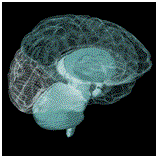Neuroplasticity... The future focus of PT
Reference:Pelletier R et al Is neuroplasticity in the central nervous system the missing link to our understanding of chronic musculoskeletal disorders? BMC Musculoskelet Disord. 2015 Feb 12;16:25.
Physiotherapy pain assessment and treatments traditionally focus primarily on structural pathologies where we search for abnormalities located locally within the musculoskeletal system.
The problem is that the excessive focus on a “structure at fault” model may be failing many patients, potentially contributing to transitioning patients with acute pain to persistent pain.
Why do some patients fail to respond to manual therapies, exercises and various modalities?
Why do some patients continue to experience pain when no structural cause can be found?
Neuroplastic changes within different areas of the CNS may offer an explanation for the transition of some patients from acute to persistent pain conditions.
“Current conventional interventions in rehabilitation do not usually address underlying neuroplastic changes in the CNS” (Pelletier et al 2015)
With growing evidence, we can now appreciate that sometimes persistent musculoskeletal pain with movement may be less related to tissue pathology and more often to changes within the CNS. I can see PTs taking a lead role in addressing neuroplastic changes in the CNS in the future.
Clinical Relevance: Of course, let’s not go over board and assume every patient is centrally sensitized, and irrationally stop addressing structural pathologies.
All I am saying is that when you see a patient who has seen 5 different PTs, 2 RMTs, has received 2 years of chiropractic care and has a negative MRI, etc., tell yourself: there must be more to this than a soft-tissue injury!
Posted on: July 03, 2015


